


By now the arms are difficult to trace, and nearly the whole of the face of the galaxy is covered with young star-producing regions. The brightest of the galaxies is NGC 1087 (MBT0, i = -21m.4), which clearly is of later luminosity class than any of the galaxies shown in the ScI, ScI-II, ScII, and ScII-III panels. Hence, the range in absolute magnitude among ScIII galaxies is large, with a spread of 2.8 mag among the six illustrated galaxies. The faintest is NGC 2500 at MBT0, i = -18m.66; yet its form is more regular than that of NGC 3059, which is 1.4 mag brighter and is certainly more regular than NGC 1087. The total range in M for galaxies classified as ScIII in the RSA is ~ 3.5 mag. And although better plates are needed for some of these, there is no question that the range is large, since the absolute magnitude of NGC 7314 (MBT0, i = -21m.26) and of NGC 4808 (MBT0, i = -18m.51), for example, is secure.
The phenomenon of outer, faint-surface-brightness ``fossil arms'' is clearly shown in several of the galaxies in this panel. Note particularly the very faint outer fragments of arms in NGC 3059, NGC 1493, and NGC 2403. We took NGC 2403 to be the type example of ScIII.
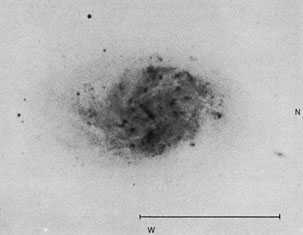
NGC 1087 W100-279-B Sc(s)III.3 -21m.43 1530 km/s | 
NGC 3059 C100-742-S SBc(s)III -20m.14 1267 km/s |
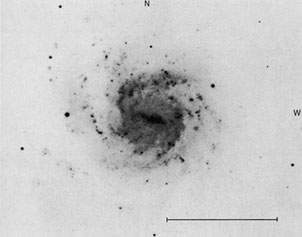
NGC 1493 C100-201-S SBc(rs)III -19m.84 1053 km/s | 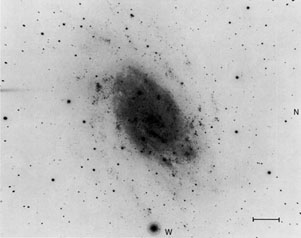
NGC 2403 P200-78-S Sc(s)III -19m.47N 131 km/s |
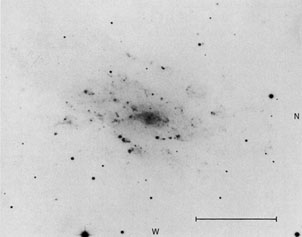
NGC 2541 P200-93-MH Sc(s)III -18m.93 560 km/s | 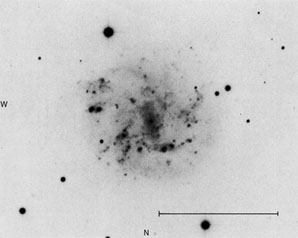
NGC 2500 P200-92-MH Sc(s)II.8 -18m.66 516 km/s |